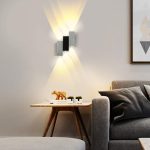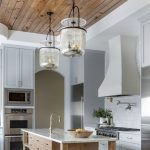
Introduction
When it comes to interior design, lighting plays a crucial role in setting the tone and mood of a room. This is especially true for loft rooms, which often have unique angles, high ceilings and exposed beams that require a thoughtful approach to lighting. In this article, we’ll explore the different types of lighting that are best suited for loft rooms, and how to use them effectively to create a warm and inviting space.
Types of Lighting
Ambient Lighting
Ambient lighting is the primary source of light in a room, and serves to illuminate the entire space. For loft rooms, it’s important to choose a light fixture that can handle the high ceilings and open space. Pendant lights are a great option, as they can be hung at various heights to create visual interest and provide an even distribution of light. Chandeliers are also a popular choice, as they can add a touch of elegance and drama to a room.
Task Lighting
Task lighting is used to illuminate specific areas of a room where activities such as reading, studying, or working take place. In a loft room, task lighting can be used to highlight certain features, such as a bookshelf or art piece. Floor lamps and table lamps are great options for this type of lighting, as they can be easily moved and adjusted for optimal lighting.
Accent Lighting
Accent lighting is used to create visual interest and highlight architectural features, such as exposed brick or wooden beams. This type of lighting can also be used to showcase artwork or decorative items. Wall sconces are a popular choice for accent lighting, as they can be mounted on the wall to create a soft glow and add dimension to a room.
Creating Atmosphere
In addition to choosing the right lighting fixtures, it’s also important to consider the color temperature and intensity of the light. Warm, soft light is ideal for creating a cozy and inviting atmosphere in a loft room, while bright, cool light can create a more energetic and modern feel. Dimmer switches are a great way to adjust the intensity of the light and create a range of moods depending on the time of day and the activity taking place in the room.







